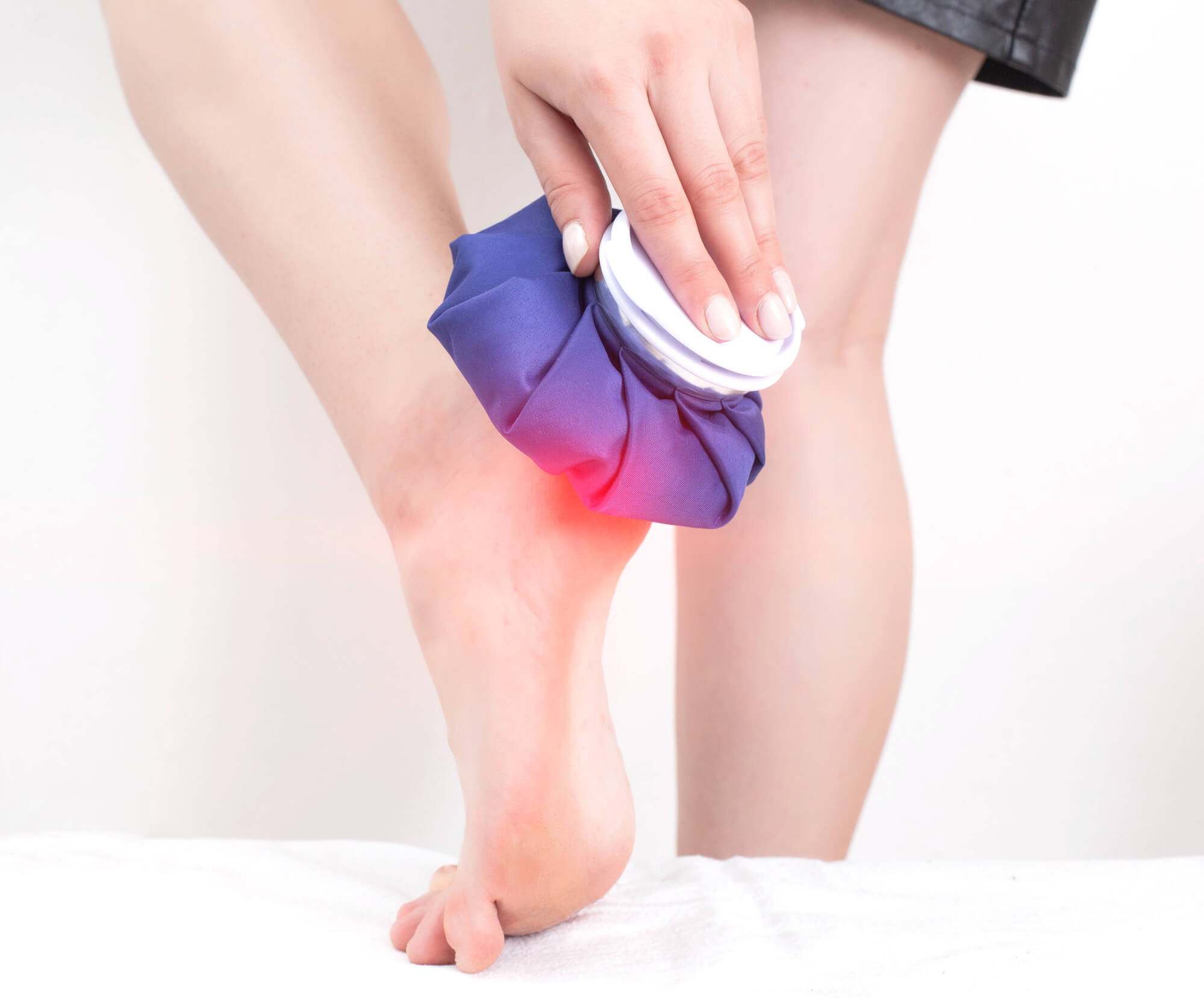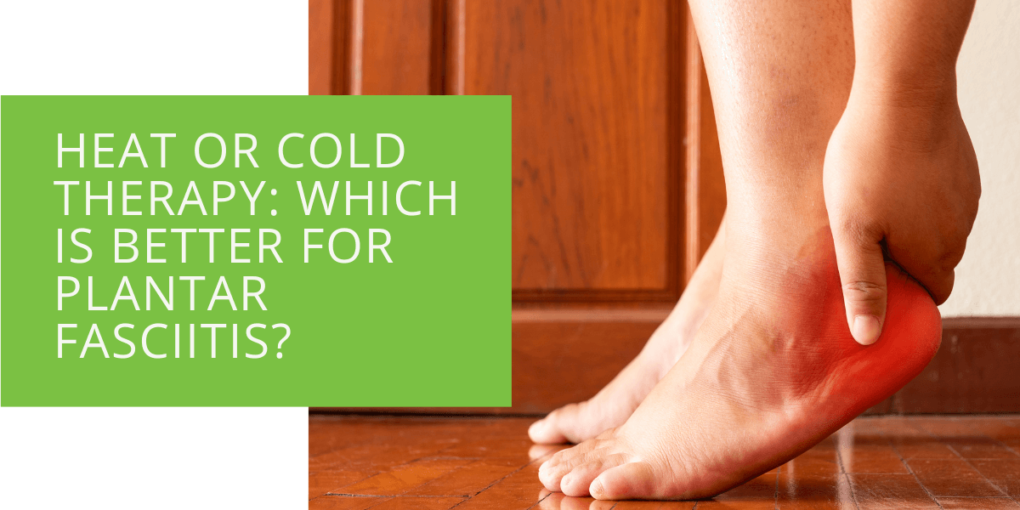Heat or Cold Therapy: Which is Better for Plantar Fasciitis?
Plantar fasciitis is a common foot condition that causes pain and inflammation in the heel and arch of the foot. It is often caused by overuse or strain on the plantar fascia, a thick band of tissue that runs across the bottom of the foot and connects the heel bone to the toes. Symptoms of plantar fasciitis include heel pain, especially when first standing up in the morning or after long periods of sitting, and pain when walking or running.
If you are experiencing plantar fasciitis pain, you may be wondering which treatment options are best for relieving your symptoms. One common method of treatment is heat or cold therapy, which can be used separately or in combination. But which is better for plantar fasciitis? In this article, we will explore the benefits and drawbacks of heat and cold therapy for plantar fasciitis, and provide tips on how to safely and effectively use these treatment methods. It is important to note that every person is different, and what works for one person may not work for another. If you are experiencing foot pain, it is always best to seek the advice of a podiatrist or other medical professional before starting any treatment.
What is Plantar Fasciitis?
Plantar fasciitis is a common condition that affects the plantar fascia, a thick band of tissue that runs across the bottom of the foot and connects the heel bone to the toes. The plantar fascia helps to support the arch of the foot and absorb shock when we walk or run. Overuse or strain on the plantar fascia can cause tiny tears or inflammation, leading to pain and discomfort.
Plantar fasciitis is more common in people who are on their feet a lot, such as athletes or those with jobs that require standing or walking for long periods of time. It is also more common in people who have high arches or flat feet, or those who wear shoes that do not provide enough support. People who are overweight or obese are also at a higher risk for developing plantar fasciitis, as the excess weight places additional strain on the plantar fascia.
Symptoms of plantar fasciitis include heel pain, especially when first standing up in the morning or after long periods of sitting, and pain when walking or running. The pain may be worse after exercise or when standing for long periods of time, and may improve after rest or stretching.
Heat Therapy for Plantar Fasciitis

Heat therapy is a treatment method that uses heat to increase blood flow and relax muscles. There are several ways to apply heat therapy to the foot, including using a heating pad, taking a warm foot bath, or using a warm compress.
One of the benefits of heat therapy for plantar fasciitis is that it can help to increase blood flow to the affected area, which can promote healing and reduce muscle tension. Heat therapy can also help to relax muscles, which can reduce pain and stiffness.
Heat therapy is generally safe and effective for plantar fasciitis, but there are a few precautions to keep in mind. It is important to use heat therapy only after the acute stage of plantar fasciitis has passed, as heat can increase inflammation in the early stages of the condition. It is also important to use heat therapy in moderation, as overuse can lead to skin irritation or burns.
There are a few potential drawbacks to heat therapy for plantar fasciitis. Some people may find that heat therapy makes their pain worse, or that it causes discomfort or skin irritation.
Pros
Cons
Cold Therapy for Plantar Fasciitis

Cold therapy, also known as cryotherapy, is a treatment method that uses cold to reduce inflammation and numbness. There are several ways to apply cold therapy to the foot, including using an ice pack, taking a cold foot bath, or using a cold compress.
One of the benefits of cold therapy for plantar fasciitis is that it can help to reduce inflammation and swelling in the affected area. Cold therapy can also help to numb the area, which can provide temporary pain relief. Cold therapy is generally safe and effective for plantar fasciitis, but it is important to use it in moderation to avoid skin irritation or frostbite.
Like heat therapy, there are a few potential drawbacks to cold therapy for plantar fasciitis. Some people may find that cold therapy makes their pain worse, or that it causes discomfort or skin irritation. It is also important to use cold therapy only in the acute stage of plantar fasciitis, as it may not be as effective in the later stages of the condition.
Pros
Cons
Which is Better: Heat or Cold Therapy for Plantar Fasciitis?
So, which is better for plantar fasciitis: heat or cold therapy? The answer is that it depends on the individual and the stage of the condition.
In the acute stage of plantar fasciitis, when the pain is at its worst and the inflammation is at its highest, cold therapy may be more effective in reducing swelling and numbness. Cold therapy can also be helpful in reducing pain and discomfort after exercise or other activities that put strain on the plantar fascia.
As the condition improves and the inflammation decreases, heat therapy may be more effective in increasing blood flow and relaxing muscles. Heat therapy can also be helpful in reducing stiffness and improving flexibility.
It is important to consider the severity of your symptoms and the stage of the healing process when choosing between heat and cold therapy for plantar fasciitis. It is also important to seek the advice of a podiatrist or other medical professional before starting any treatment.

Tips for Using Heat and Cold Therapy Safely and Effectively
If you decide to use heat or cold therapy for plantar fasciitis, there are a few things to keep in mind to ensure that you are using the treatment safely and effectively:
- Use heat or cold therapy only after the acute stage of plantar fasciitis has passed, as appropriate for the stage of the condition.
- Use heat or cold therapy in moderation to avoid skin irritation or other side effects.
- Follow the instructions for the heat or cold therapy method you are using, including the recommended duration and temperature.
- Protect your skin from direct contact with the heat or cold source to avoid burns or frostbite.
- Monitor your symptoms and seek further medical attention if your pain persists or worsens.
Conclusion
Heat and cold therapy can be effective treatment methods for plantar fasciitis, but they are not right for everyone. It is important to consider the severity of your symptoms and the stage of the healing process when choosing between heat and cold therapy, and to seek the advice of a podiatrist or other medical professional before starting any treatment.
It is also important to follow the instructions for the heat or cold therapy method you are using and to use the treatment in moderation to avoid skin irritation or other side effects. In addition to heat and cold therapy, it is important to consider other treatment options, such as stretching and footwear changes, in your overall treatment plan for plantar fasciitis.
Remember, every person is different, and what works for one person may not work for another. It is important to monitor your symptoms and seek further medical attention if your pain persists or worsens. With the right treatment plan and a little patience, you can find relief from plantar fasciitis pain and get back to your daily activities.

